Before we jump into it, this article is not a post about the benefits of pitching your business to the media [read: exposure and getting backlinks for SEO]. It’s an in-depth guide on best practices with examples to give you the greatest chance for success when you do pitch.
Full disclosure, I have developed a suite of PR outreach tools to help you do your own outreach. But the information I provide you here will work whether you use PR software or not.
Don’t have time to read the full article right now?
Download all of our proven media pitch templates here
What is a media pitch?
A media pitch is an email attempting to get a journalist, editor or media outlet interested in your story or news so that they decide to cover it. It is sent to a journalist or an editor of a newspaper, magazine, blog over email with the aim to arouse interest in the story and to ask if they would want to write about it.
In its simplistic form, a media pitch is: your ‘ask’.
You have some relevant story (say, interesting data on your industry) worthy of piquing the curiosity of your target journalist and you ask them (through an email) if they would be interested in writing an article about it or mentioning it in their regular stories.
Here is a great example of a pitch sent by our good friend Remy from DateID.com which got him an interview with AARP (click on the image to enlarge):
Here is a great example of a media pitch sent by our good friend Gaetano from Nextiva a voip phone service company to write at a publication (click on the image to enlarge):
Here is one of my most favorite examples of how to pitch data and survey results to gauge interest of a journalist from Brian Dean of Backlinko:
As an option you can always add the details this way:
Is Writing a Media Pitch Difficult?
Writing an effective media pitch that gets a journalist to respond is not difficult or complex.
But there’s a catch…
Journalist and Forbes contributor Mikal E. Belicove, who shifts through two dozen pitches a day, says most of them are fatally flawed. “…pitches that serve no real purpose, or news announcements that have no basis in fact, or bulletins that make preposterous claims,” says Belicove.
Bottom line?
Journalists receive dozens of pitches in a day and therefore only look at those that are relevant, newsworthy, brief, structured and timely.
Your media pitch needs to be exactly that!
In this post, I’ll give you 5 tips to craft the best media pitch.
I’ll also share examples of what a good media pitch looks like plus provide ready-to-use pitch email templates.
Ready? Let’s roll!
Don’t have time to read the full article right now?
Download all of our proven media pitch templates here
Media Pitch Tip #1: Identify the Right Journalist
Media Pitch Tip #2: Build a Relationship
Media Pitch Tip #3: Personalize Your Pitch
Media Pitch Tip #4: Have a Great Hook
Before we begin, here’s a brief look at the structure of a media pitch.
How To Structure A Media Pitch
An effective media pitch makes a journalist sit up and take notice of your content. It also enables them to easily spin a story for their readers.
Here’s how an effective media pitch is structured:
- You start with the lead. This is your news peg or why your story is newsworthy.
- Next, put your call-to-action. This is what you want your target journalist to do – write a product review, conduct an interview, mention your company is an industry story. It is essential that you make your intention as clear as possible.
- Then define your value proposition. In this section you show the journalist why they should be interested in your story. You demonstrate the value of your offering by differentiating yourself from hundreds of other pitches they receive daily.
- Conclude your email with a thanks and recap your call-to-action. Don’t forget to mention your name and contact details – email, phone number – so that the journalist can connect with you if they need more details.
Using Power Of AI To Send Personalized Pitches Faster
Crafting a pitch that is structured right, is personalized, and that grabs the attention of a journalist is a very time consuming process because it has to be done one at a time for each individual journalist.
But we’ve made it super easy with our AI powered email engine.
We use AI to read the article from the journalist and then craft an email that talks about the article in a specific way, then seamlessly transitions into your pitch. The best part about it is this all happens in about 5 seconds.
Here is a sample email our AI engine generated in a few seconds: 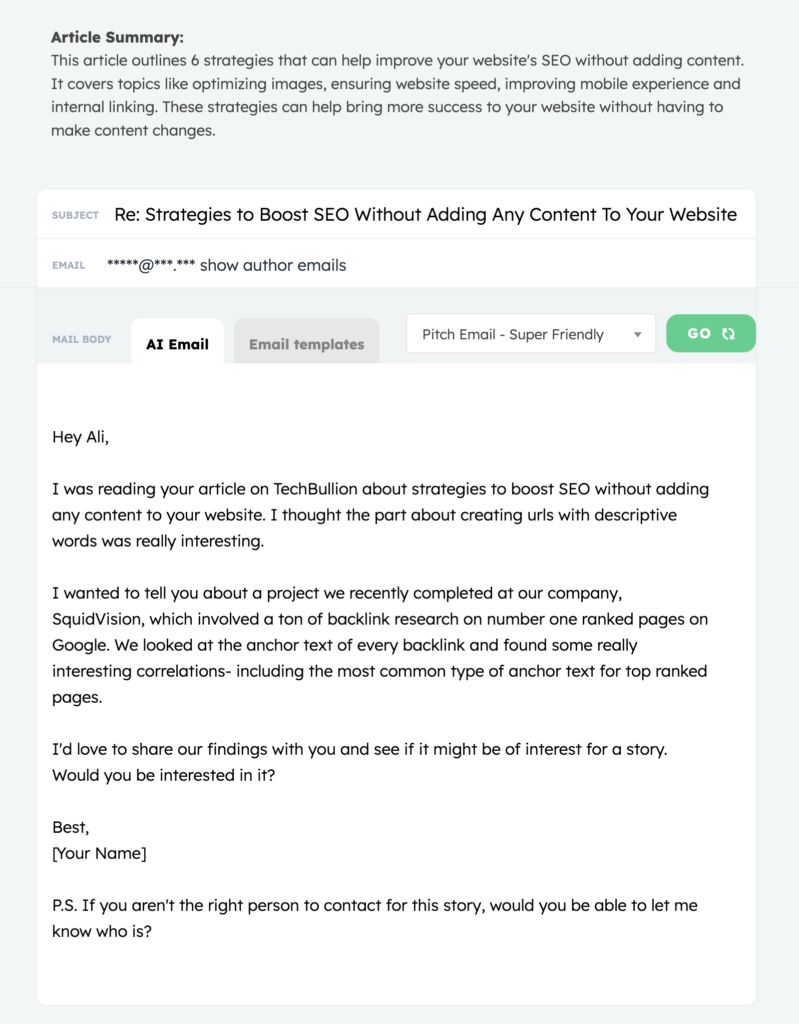
If you are going to reach out to a large number of journalists (more than 20) this feature will save you hours. You can give our AI powered journalist pitch engine a try here.
How to Write an Effective Media Pitch (Plus Examples & Templates)
Before we get into setting up the steps that are generally required for an effective media pitch (with examples), I wanted to first give you an example of a pitch that has been used successfully many times and that doesn’t require any build up. In other words, you can send this as a cold pitch and you will still get results. This was written for us by 30 year PR pro Janet Falk.
[JOURNALIST FIRST NAME],
Your coverage of issues in the [Enter their INDUSTRY] prompted me to contact you with a source who can comment on [HOT TOPIC] in the sector.
[PROFESSIONAL NAME], [TITLE at COMPANY in CITY], has extensive experience in [AREA 1, AREA 2 and AREA 3]. In addition, she has [ACHIEVEMENT]. She is certified by the [ASSOCIATION>, has an MBA and is a member of the [PROFESSIONAL ASSOCIATION].
[NAME> works with [KEY AUDIENCE], especially [KEY SUBGROUP].
She sees these trends on the horizon:
HOT TOPIC 1
HOT TOPIC 2
HOT TOPIC 3.
Here’s a sample quote:
“The top companies in the specific industry are gearing up for the implementation of Regulation ABC, well before the January date. This allows the operations team sufficient lead time to test all systems and the marketing group to prepare for customer feedback.”
To speak with NAME on these and other hot topics in [INDUSTRY], please contact me at [CELL PHONE] or [EMAIL ADDRESS].
Looking forward to arranging a thoughtful conversation.
Regards.
[YOUR EMAIL SIGNATURE]
If cold pitching isn’t your thing, or you just want to learn everything you can about establishing relationships with journalists first, read on.
Now let’s get into it.
Media Pitch Tip #1: Identify the Right Journalists
Make a list of prospects – journalists, writers and media sources (hint: you can do this really easily inside of JustReachOut’s AI powered journalist outreach tool).
This list can be as extensive or as limited as your resources permit.
Your prospect list will depend on the kind of content you’re trying to promote.
If the content is of interest to a broad audience, it might fit well on any of the large news/entertainment blogs (think Buzzfeed, HuffPost, etc.).
For more specialized content (say, a study on content marketing trends), you’ll want to target industry-specific publications and influencers.
A quick tip: When looking for targets, it’s always a good idea to focus on engagement than traffic.
It’s better to get a feature on a site with 1,000 readers who share your content than a site with 1M readers that has no engagement.
Here are few strategies to find high quality prospects:
1) Find sites that are linking to similar content
Find similar content and see who all have linked to it. This is an easy way to discover targets.
For example, if you plan to do a study on “content marketing trends”, you can Google this keyword, see the top results, and plug them into your favorite SEO tool.
Add relevant modifiers like “study”, “research”, “data”, etc. to this keyword to narrow down your results.
Here is how Rod Smith, CEO of Verum does his keyword research:
“I usually take about 20 minutes every week to come up with a new list of keywords for searching journalists based on the news of the day.”
2) Use Nuzzel
Nuzzel is a great tool for finding curated content on popular topics. Use it to discover influencers, top stories and trending publications.
JustReachOut’s journalist outreach tool is really relevant to find high quality prospects as it gives you a list of journalists who have written about your specific topic, not just publishers.
To use JustReachOut, just search for your target keywords (say, “bitcoin”) and you’ll see a list of journalists and bloggers along with their contact details. You can send them an email pitch directly through JustReachOut.
Once you have a list of journalists who write about your niche or industry regularly, send them an email to get on their radar.
For example, you can send an email appreciating a journalist’s work. Appreciation emails work well when sending an email for the first time. It also ensures journalists remember your name.
Media Pitch Template for Appreciation Email
Subject: Re: Loved your article about
Hi ,
I’ve been following your blog for the past 3 years, so many great insights!
Your recent post about really resonated with me.
I followed it step-by-step and I found it .
You can read my post about it here:
If you’re so inclined, I’d love for you to share it with your audience.
Thanks for sharing your can’t-find-anywhere-else tips with the community.
Thanks,
Your Name
Contact Details
Media Pitch Tip #2: Build a Relationship
Here’s the deal:
To get the best results from your media pitch you need to start a conversation with journalists before you pitch to them.
You need a “personalized conversation starter” to get build your rapport and get the relationship going.
These conversation starters can be built by:
- Following the journalist on Twitter
- Sharing their posts
- Commenting on their published stories
- Offering objective insights regarding their stories in the comments
Want to know the best part?
These steps will ensure that your first email will not look like coming from a total stranger. You will have something “personal” to talk about in that first email.
Even if the journalist doesn’t immediately recognize your name, you can refer to your existing ‘relationship’ in the email.
A quick tip: Your first contact should be in accordance to your established rapport with the journalist. If you’ve had a conversation online, the tone can be warmer.
However, if you’ve followed them, commented on their articles, and shared their posts without any acknowledgement, be more formal.
For example, you can send them an email correcting a typo in one of their recent articles or share some research data or insight you have about a topic they write about. Ask for their feedback.
Here’s an example of a typo email sent to Sujan Patel to build a relationship:
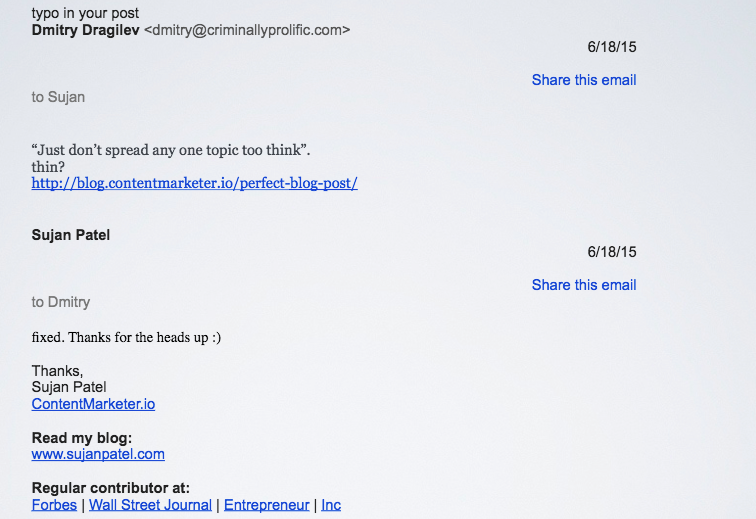
Media Pitch Template for Typo Email
Subject: Typo in your article
Hi ,
Respect your reporting a great deal, love the stories you put out. Crazy to think that there are more people using mobile vs. desktop now.
Saw that you have a few spelling mistakes in your recent article, wanted to follow up:
“The project, which was was announced”
“The content will be uses for The New York Times”
Looking forward to your next stories.
Which article are you working on next?
Thanks,
Your name
Contact details
Media Pitch Tip #3: Personalize Your Pitch
Personalizing your pitch is critical to getting the attention of a journalist. If they feel like you are just spamming them with the same email you sent to a hundred other journalists, that will be the death of your pitch.(Hint: We’ve built AI into our journalist pitch engine that will read a journalist’s article for you and create a personalized email pitch in seconds.)
Apart from a killer subject line, your media pitch needs to:
- Demonstrate that you regularly read and are familiar with the media outlet.
- Show you have read articles written by the journalist/ editor (Mention individual articles and pull quotes from within.)
- Prove you have an understanding of the media source’s readership as well as what topics and stories are most valuable and shared.
- Clearly align your provided statistics, insight, or information with the reporter’s current beat, interests, and most popular articles (Make it easy for them to see the reason you’re contacting them and why they should be happy about it.)
- Provide them with all the details they need to make an immediate decision about the information and you as a reputable source (Provide your email, phone number, links to referred information as well as any applicable references to your expertise.)
A quick tip: Email endings are just as important as the first sentence.
It gets better:
An interesting sign off to your email will not only leave a favorable impression on your recipient but also increase your chances of a response.
Read these 80 powerful email endings to make people remember you.
Although you must initiate a conversation and build a rapport before pitching to a writer, if you do plan to send a cold email, take a look at these 26 cold email templates.
You can also try these 40 cold email tips that guarantee a response.
Here’s an example of a personalized media pitch email:

Media Pitch Template with Personalization
Subject: Re: Shared your recent article on
Hi
Being an avid reader of section, I’ve ‘knitted through’ (haha) several of your articles of late.
As per my Twitter share and comment, I was especially affected by your story on .
I know providing
I thought you may be interested in the following statistics about as my company has been collecting data on such over the last five years.
Let me know if you would like more details.
Thanks,
Your Name
Contact details
Media Pitch #4: Have a Great Hook
Journalists love to read new content in areas they write about regularly. They give emphasis on email pitches that have relevant news pegs.
If you can align your media pitch to a big news story or share content that is related to their recently published work, it can work wonders. For example, as a SaaS startup if your product or service aligns with an innovation within the tech industry that the reporter recently covered, it would be a great hook.
If you are sharing relevant content, make sure it is:
- Highly related to their previous work.
- Obscure enough that they might not have read it themselves.
- An interesting or controversial take on the topic but from a reputable source.
Here’s an example media pitch sharing relevant content:
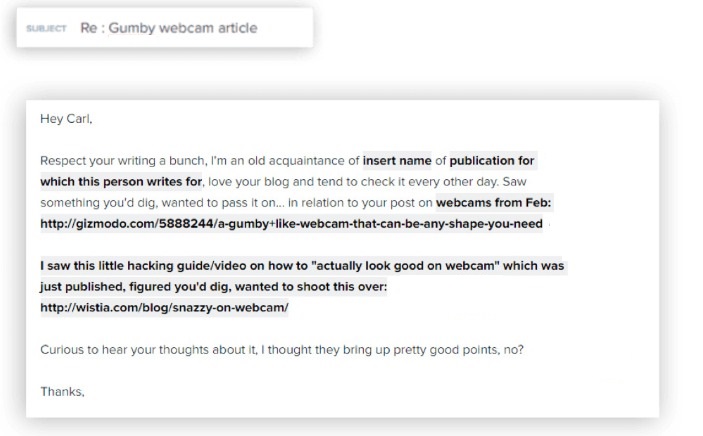
Here are 10 media pitch email templates you can download and use for free. Templates come in an editable Google doc.
Media Pitch Template for Relevant Content
Subject: Interactive Map of Weed Legalization in Canada
Hi ,
I was looking for some info about legalization of marijuana in Canada and came across your recent article on the topic. You have some great data on history of legalization and current status for each province as of now
Actually, I just put together an interactive map with a map of Canada showing where it’s legal and where it has not passed, I thought you might find it useful.
Let me know if you want to check it out?
Thanks,
Your Name
Contact Details
Media Pitch Tip #5: Follow up
This is an oft-forgotten yet crucial step.
Once you have sent your media pitch, wait for a reply or schedule a follow-up several days later. JustReachOut makes this super easy by simply clicking the Add Scheduled Follow Up button when you send a pitch to a journalist.
This automatically checks to see if the journalist has replied to your email after 3 days and if not it automatically sends a follow up email. You can schedule as many follow up emails as you want.
Following up is where most magic happens. Very rarely do you get a response right away. There is a research study out there which says that sending a follow up email increases your chances of a response by 2X.
Specifically 50% of closures come in after the fifth touch. As per the same study, 93% of closed leads took 6 attempts to connect.
Most reporters and professionals are busy people with a lot of their plate. So it is usual that they may have missed your first pitch email. Sending a follow-up email can bump you to the top of your recipient’s inbox.
Keep moving your targets from the “Emailed Journalist” to “Connected With Journalist” so you can see in one glance who answered and who needs a nudge.
If the journalist uses your information and its source, great news. Thank them for using your content and keep the conversation rolling.
On the other hand, he may not be interested in that particular content or information at that moment.
In that case, keep communication channels open and continue to build your rapport for future opportunities.
If you don’t get any replies to your media pitches, assess where the process went wrong. Did you:
- Select the right media outlet and person of interest
- Provide value regarding a timely and popular topic
- Make it easy for the recipient to get to relayed information (copy and paste versus providing attachments or making recipients click a URL.)
Here’s an example of a follow-up media pitch email:
Re: New data about online shopping habits – interested?
Hey Robert!
I wanted to follow up since I know things get lost sometimes.
TL;DR
We ran a study analyzing Amazon bestsellers from the past five years and found some really interesting trends, including:
– Women authors sell on average 4X as many books as male ones
– But there are more male authors than female ones in almost every category…Excluding horror and fantasy (!)
I think [publication’s] readers might find these results interesting. Happy to provide details if you’d like.
– Dmitry
Media Pitch Template for Follow-up Email
Hi ,
If you’re looking for a story for [next week, the weekend, to fill a gap in your editorial calendar], this [study, post, interview with X person] might work well.
What do you think?
Cheers,
Dmitry
Pro Tip: A lot rides on the timing of your media pitch email. A general consensus is Tuesdays, Wednesdays and Thursdays are the best days to send pitch emails.
Another thing to keep in mind is the best time to send pitch emails. Media pitches sent between 08:00 – 09:00 usually have the most click-throughs.
Lastly, ensure that the media pitch reaches the journalist when it’s the right time in their time zone, not yours.
Write Your First Email Pitch To The Media
Look:
Pitching to the media is not as complicated, daunting, or intimidating as you may think.
In fact, it can be as easy as sharing information you know will be appreciated by a colleague.
Know what your target publication, their writers and readers deem as important news then go ahead and create valuable content for them.
Next, initiate a personalized conversation with your prospect journalist and go ahead and make your pitch.
Follow these steps and see your response rates soar!
Don’t have time to read the full article right now?
Download all of our proven media pitch templates here
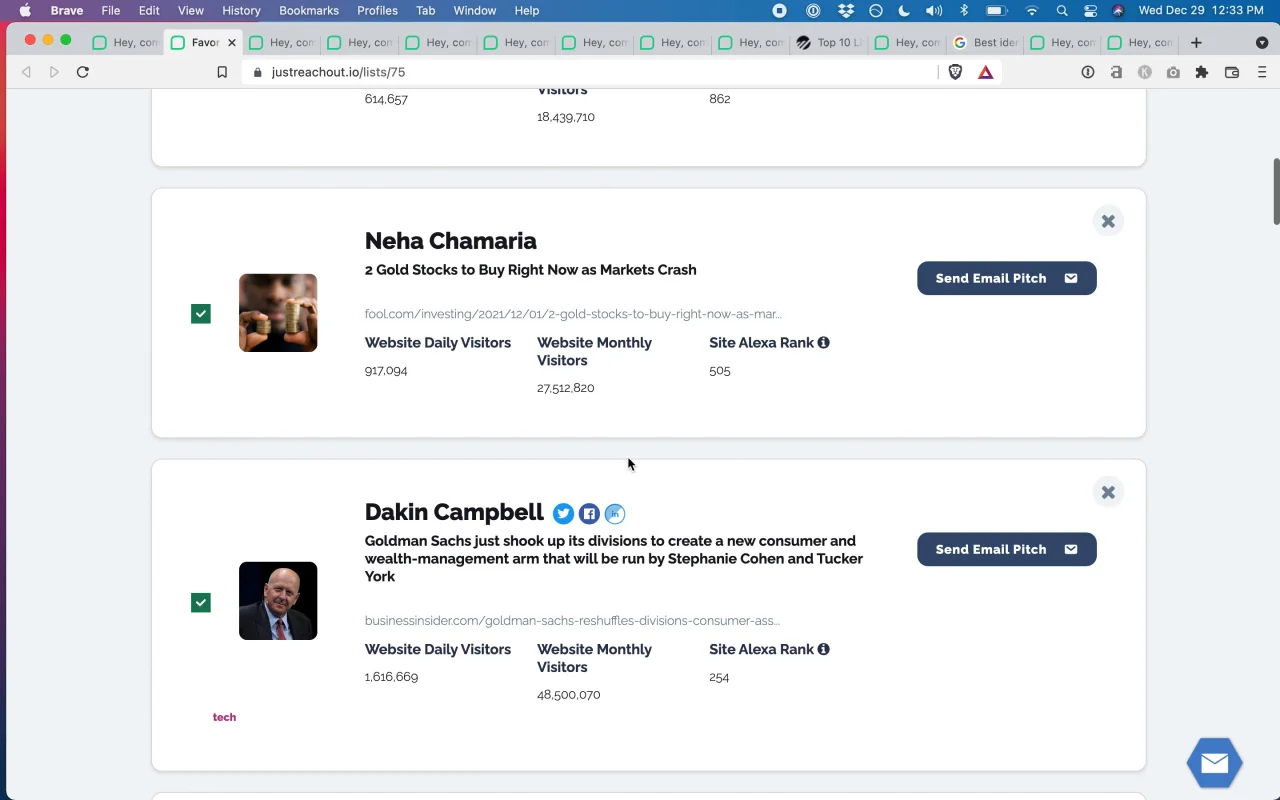


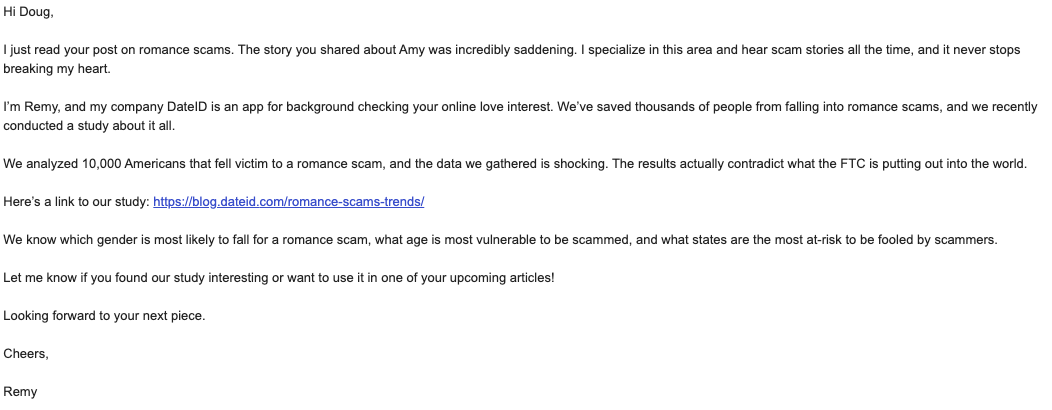
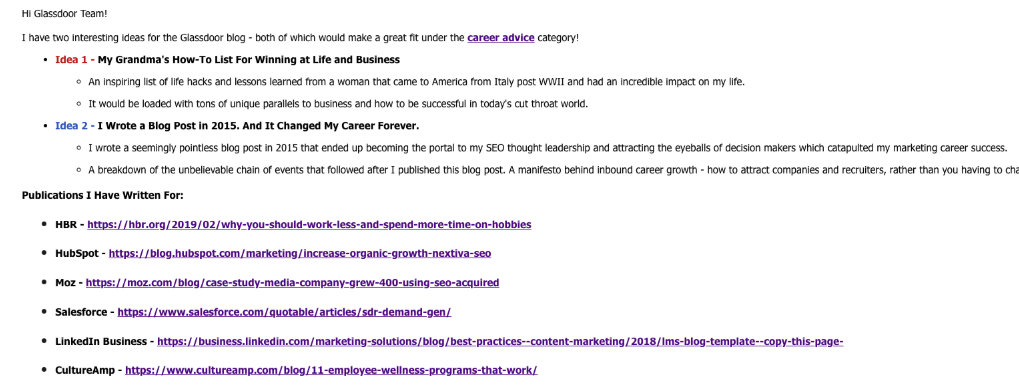
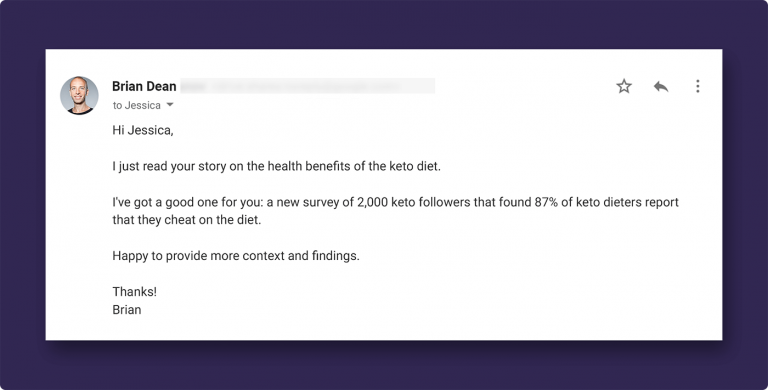
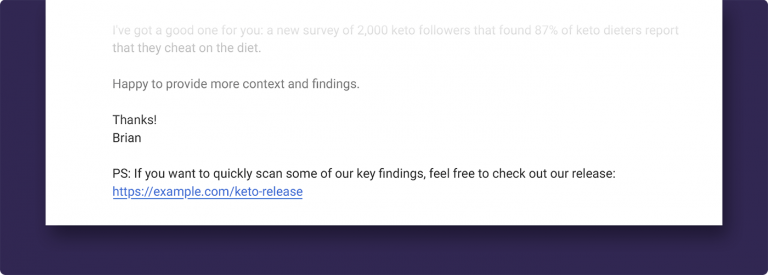
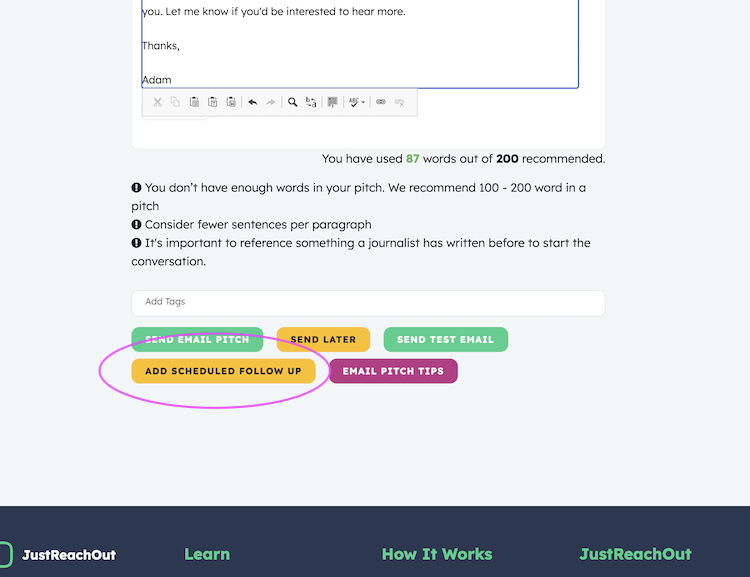



Awesome post. Quite a bit longer but definitely informative. I wonder, what do you think of writing emails with a casual/informal tone?
The best way to write emails is an informal/casual way! – Dmitry
What can I say another great article! I must really thank you I have learned so much from you! From the way you write and explain things, you must have been a great teacher!
Been banging my head against the wall for PR strategy that is concise and effective. Seems like I found it! Gonna try out the tool for my startup 😀 Thanks Dmitry
Hi Dmitry,
this will be become useful, I can feel that I found inspiration to start reaching out. By the way, I noticed templated text blocks do not wrap horizontally. Perhaps add “white-space: pre-wrap;word-break: normal;” in the css.
Thanks Oyind, can you tell me which specific templates are displaying odd for you?
Thank you very much for your sharing your PR and link building knowledge. It’s helpful!
A media pitch is very effective if it is done correctly. Unfortunately, many people don’t know how to pitch it, so they don’t get the result. It should be personal and like speaking to someone like one to one in real life. What do you think about it?
Yeah its all about building relationships and personalizing as much as possible. This is where most people go wrong.
Thanks for the informative article about how to start my Email pitch for PR release
You bet Josh. Good luck with the PR release.